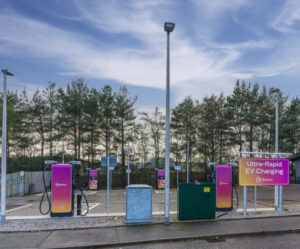While critics continue to fan the flames of doubt that electric vehicles (EVs) can compete with internal combustion engines (ICEs), evidence is mounting that range anxiety is misplaced.
Last month, Environment Journal reported on a new analysis of EVs available in the UK. Focusing specifically on so-called range anxiety – the fear of running out of power between charge points – it revealed that at the top end of the market, drivers can expect to get up to 395miles each time they plug-in.
Not bad for an average of £16.78 to fill the battery. Now Graham Conway, Managing Director of UK leasing specialist Select Car Leasing, has decided to share his own EV expertise with a series of hacks that can boost range up up to 30%. From cold weather preparation and cabin setup, to speed, and terrain type, take a look below.
Cold
‘If you drive an EV from January to December, you might notice a sizable difference in range compared with the rest of the year.The chemical reactions that take place inside a battery’s cells slow down when the mercury drops, causing charging times to increase and maximum ranges to dip. An EV battery is made of lithium-ion. When it’s cold, the little ions can’t move around as fast, and your car’s range reduces accordingly.
When it’s warm, the ions can move around more freely and electric car range increases. A recent study by What Car? demonstrated that the range of some of the most popular electric vehicles can reduce in cold weather by between 16% and 32%. So, if the weather does take a turn for the worse, you simply need to make adjustments to your schedule and plan ahead.’
Cabin temperature
‘If you have the heating on in the car, this will also use up some of your battery’s charge and your range will decrease. Obviously you don’t want to freeze to death in winter to maintain decent range! The trick is to pre-heat the cabin in the morning while the car is still plugged in. In most modern EVs you can turn the heating on remotely using an app.
‘In summer, air-conditioning will have the same effect. Cooling the car’s passenger space will use up battery power and reduce range accordingly. Renault estimates extreme heating or cooling of your EV can reduce range by as much as 30%. Some manufacturers also suggest taking advantage of heated seats, rather than the car’s air-con system, to stay toasty as it could use less energy in the long run.’
Speed
If you drive an electric car around town, at low speeds, the battery seems to last for ages. Driving slowly puts very little stress on the battery and you are rewarded with extra range.
On the other hand, if you drive on a motorway at a steady 70 mph, the distance your EV can travel on a single charge decreases. The battery has to work harder to move the vehicle 1 mile on a motorway at 70 mph than it does 1 mile in a city at 30 mph. If you’re running low on charge, and worried you might not reach your destination, slow down to eke out more range.
Terrain
If you go up a hill in an EV, you will use up your car’s battery much more quickly than you would on the flat. You’re working against the force of gravity.
However, going down a hill in an electric vehicle brings surprising benefits. As you descend and lift your foot off the accelerator, the car slows down, the electric motor goes into reverse and actually charges the battery. This is known as ‘regenerative braking’. Extra miles into your battery when you go downhill.
Acceleration
As with traditional petrol and diesel cars, electric vehicle range decreases if you accelerate hard on a regular basis. But if you drive gently, accelerating smoothly, you will get more miles out of your EV. Nearly all electric cars now come with various ‘driving modes’, e.g. Eco, Normal, and Sport. If you want maximum range, select Eco mode. For top performance, it’s Sport. For a balance between the two, go for Normal mode.
Battery condition
As electric car batteries get older, they can’t be charged up as much as they could on Day One. For example, a brand new electric vehicle with an 80 kWh battery can be charged today at 100%.
But in 5 years’ time, you might only be able to charge it up to say 95%. It would then in effect act like a 76 kWh battery (95% of 80 kWh). This gradual loss of charge capacity means a corresponding reduction in range. Fortunately, electric car batteries seem to be holding up very well and this effect is fairly minimal, especially in the latest models with the most advanced battery technology.
Missed our story on the EV models offering almost 400miles on a single charge? Find out which manufacturers are on the leader board here.
Images: Clay Banks (Top) / Matt Collamer (Middle) / Benjamin Lehman (Bottom)
















